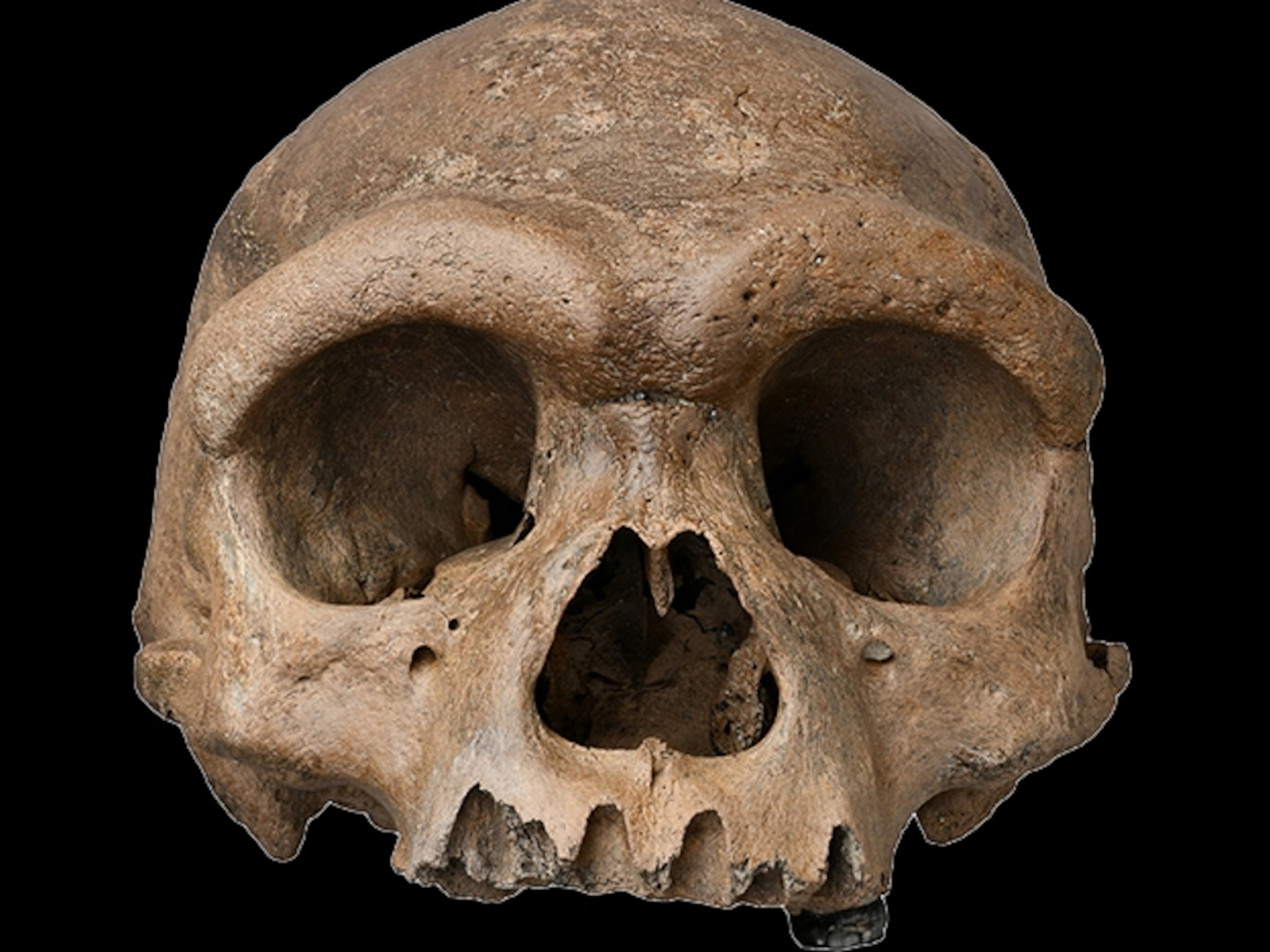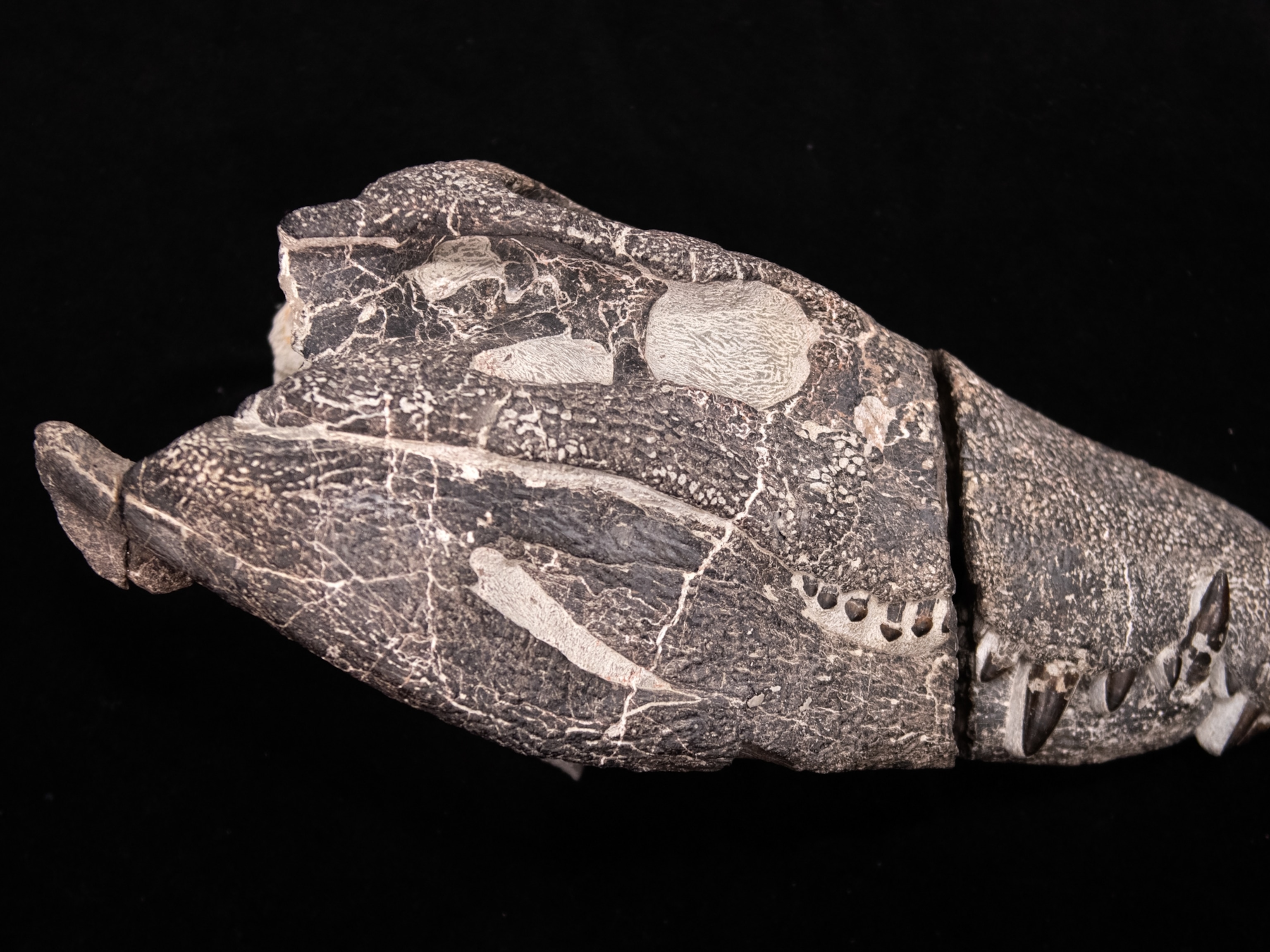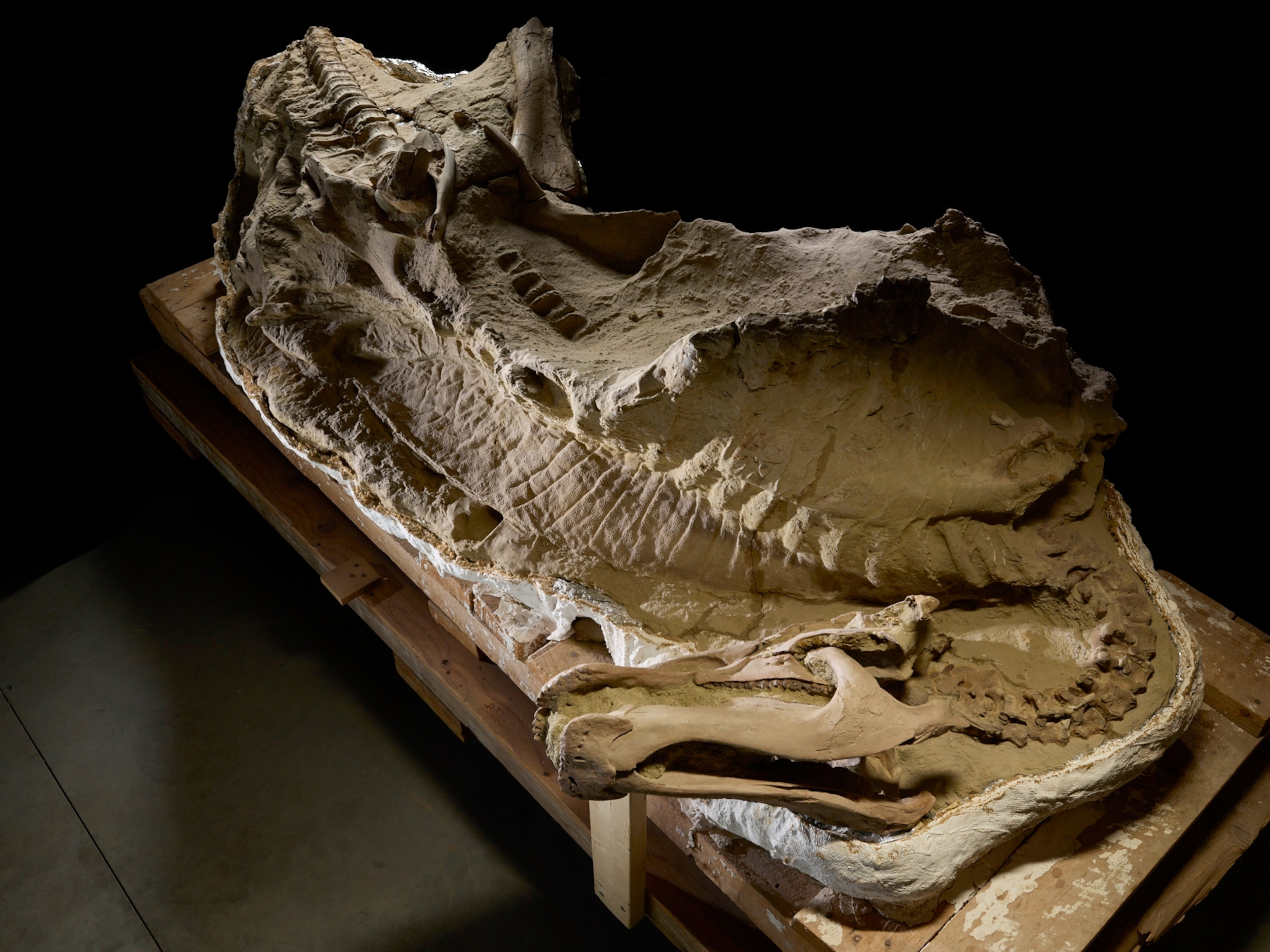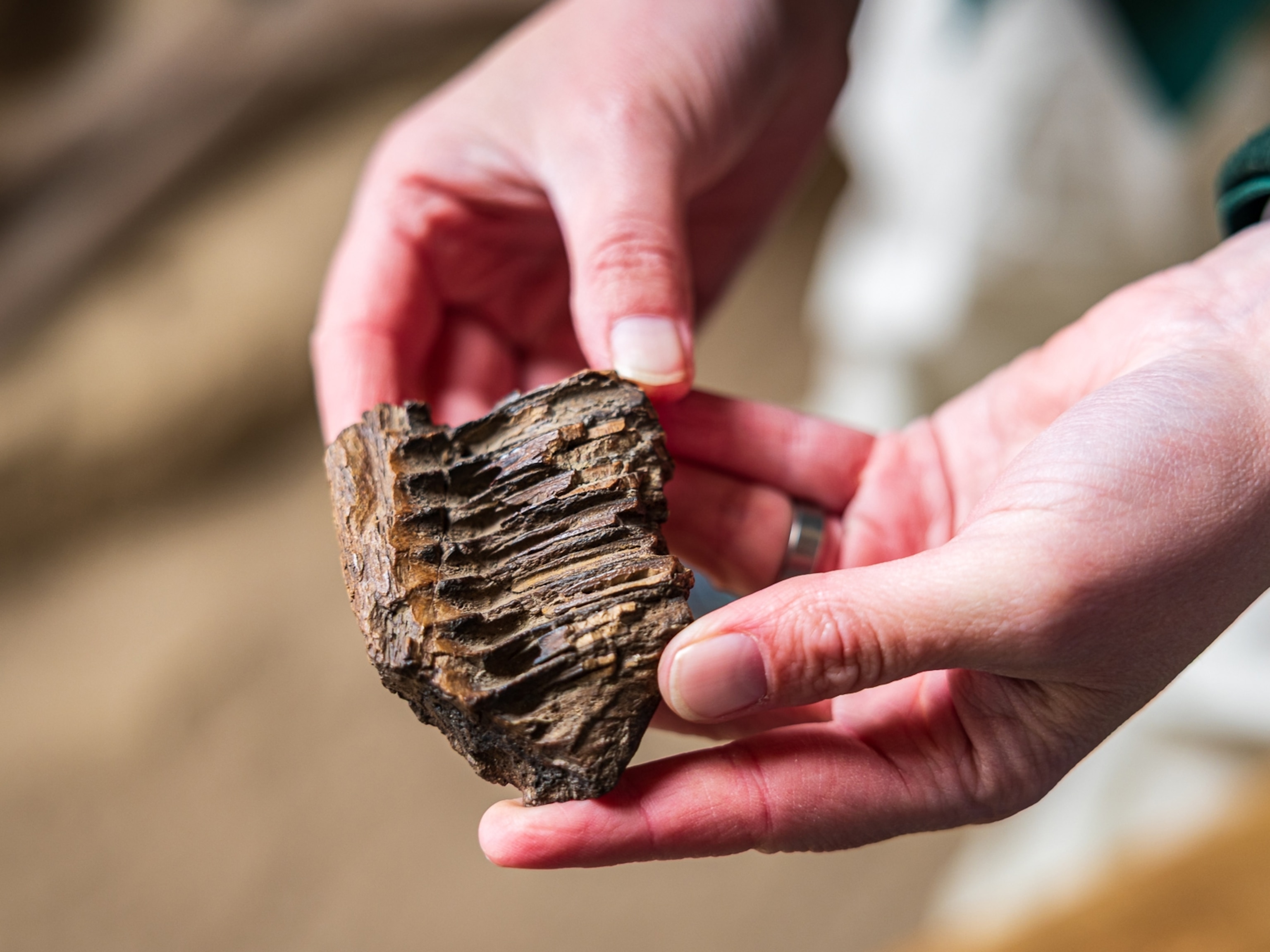
Tips on How to Become a Fossil
Pick your burial spot carefully if you want future paleontologists to find you.
Earlier this summer, on a break from scraping Jurassic stone off dinosaur bones at an eastern Utah quarry, I wandered through the fantastical landscape of Arches National Park. While following the short Park Avenue trail, I noticed that the burnt orange sand running down the middle of the canyon retained the footprints of previous visitors.
Looking at the footprints, thinking about how long they might last, a peculiar question struck me: When I die, will I leave any traces behind in the fossil record?
Fossils are not just bones. A fossil can be part of an organism's actual form, of course, such as a skeleton or carbonized plant remains. But fossils can also be evidence that an organism passed that way long ago, like footprints or idle twirls left by a twig floating along a river bottom. Or like the "Blue Lake rhino," a 15-million-year-old mold of a two-horned rhino that was created when lava poured into a lake, surrounded the herbivore's body, and then cooled.
For most species, becoming a fossil is an accident. Those footprints along the Park Avenue trail, with my sandal impressions among them, could become preserved in a petrified slab for some paleontologist of the future to mull over. But for that to happen, the tracks would have to keep their form - perhaps given a little support by some morning moisture - while new sediment totally covered them. That's how early Jurassic dinosaur footprints found just outside Arches might have formed, back when Utah was covered by huge sand dunes.





